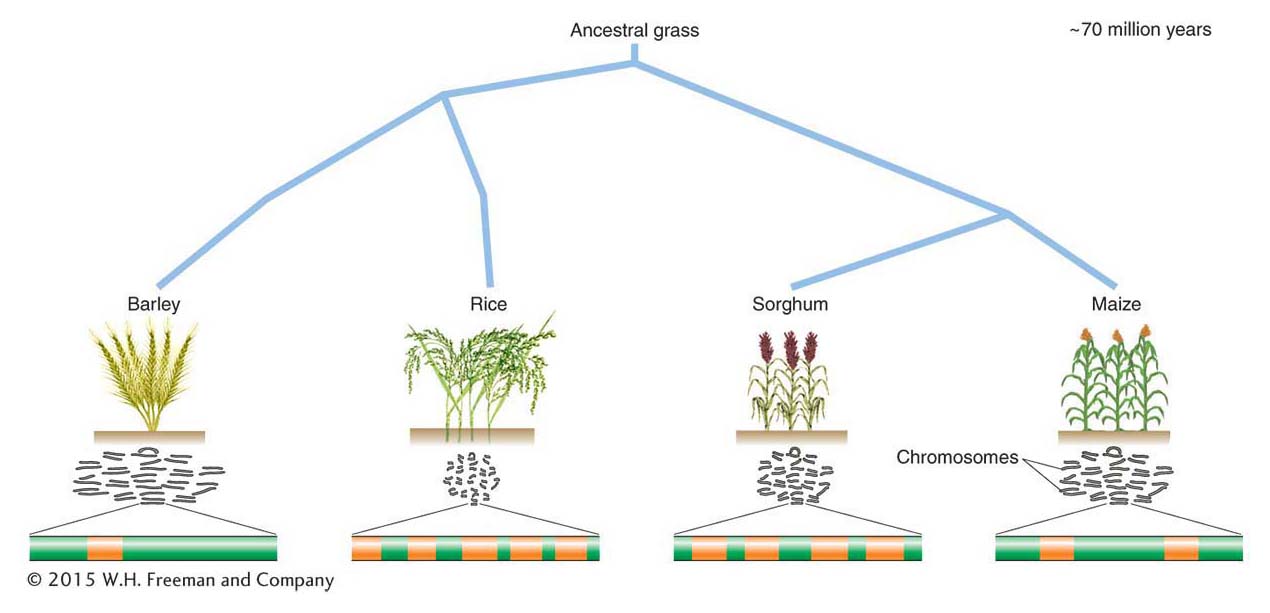Transposable elements in grasses are responsible for differences in genome size

Figure 15-23: The grasses, including barley, rice, sorghum, and maize, diverged from a common ancestor about 70 million years ago. Since that time, the transposable elements have accumulated to different levels in each species. Chromosomes are larger in maize and barley, whose genomes contain large amounts of LTR- retrotransposons. Green in the partial genome at the bottom represents a cluster of transposons, whereas orange represents genes.
[Leave] [Close]